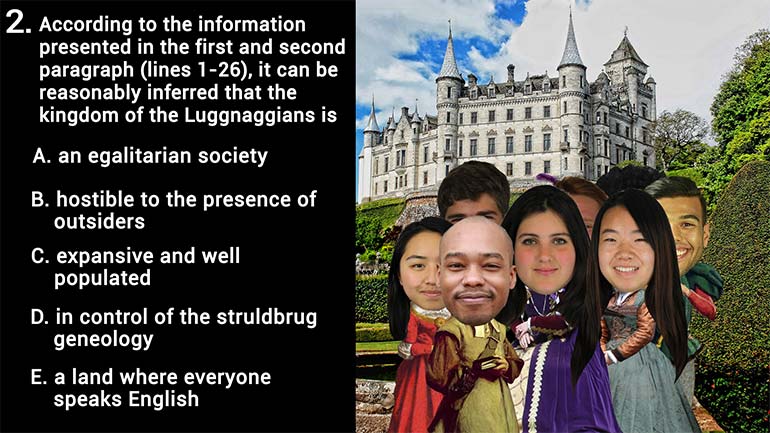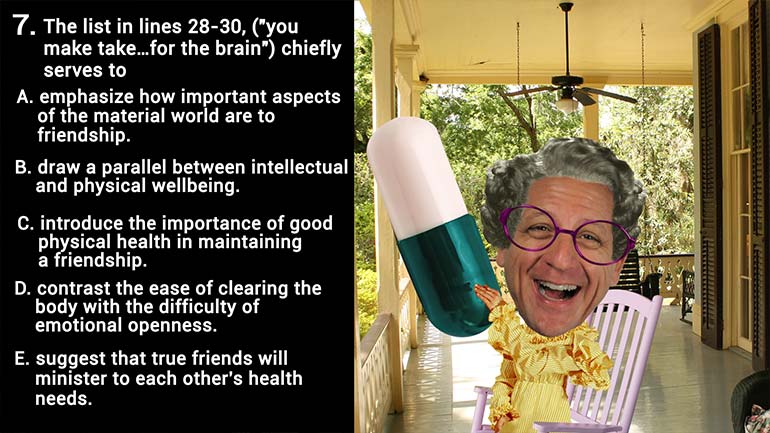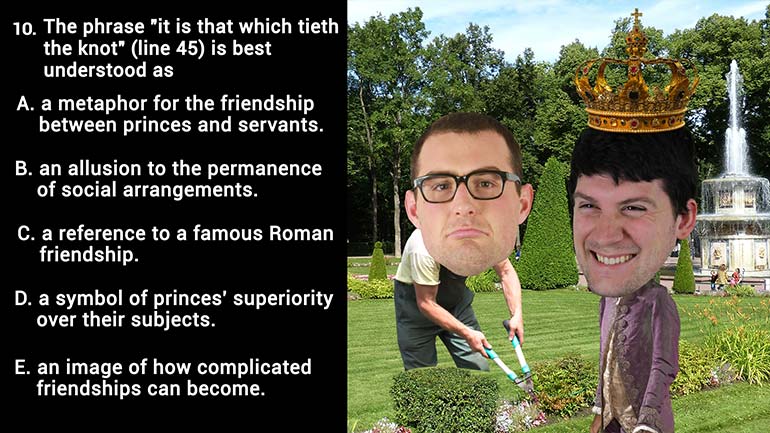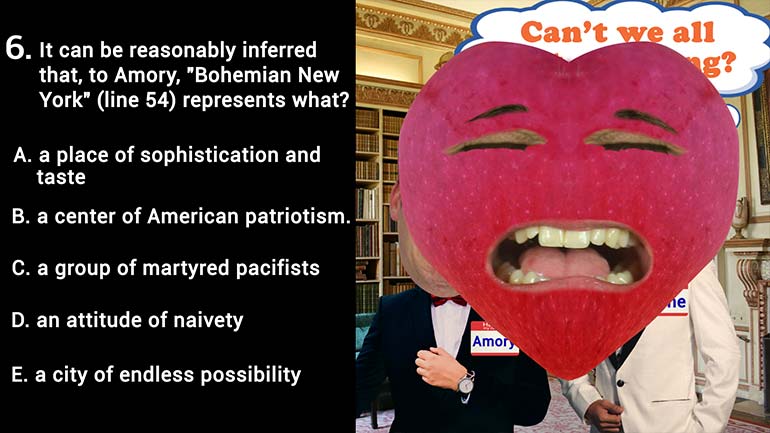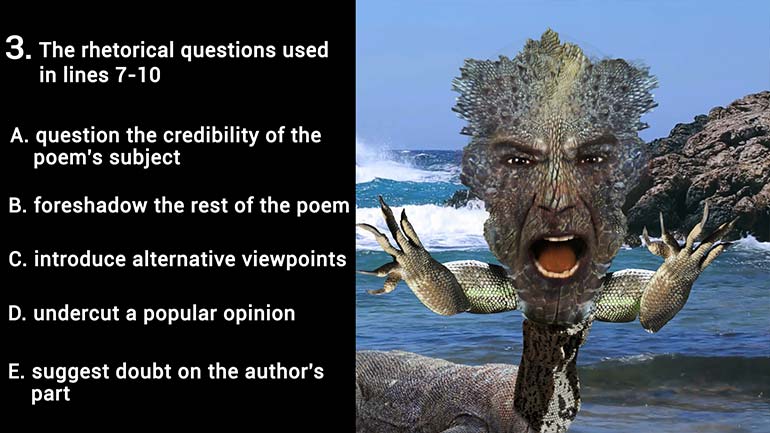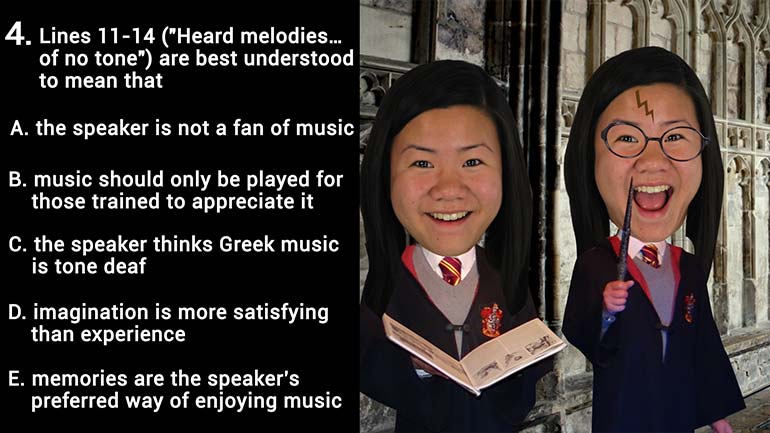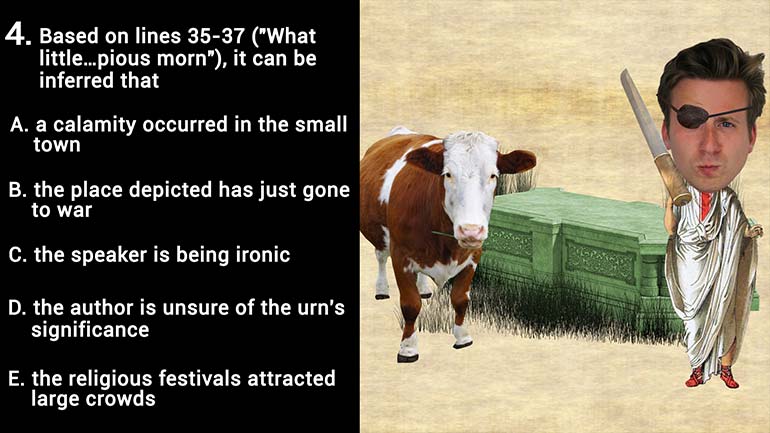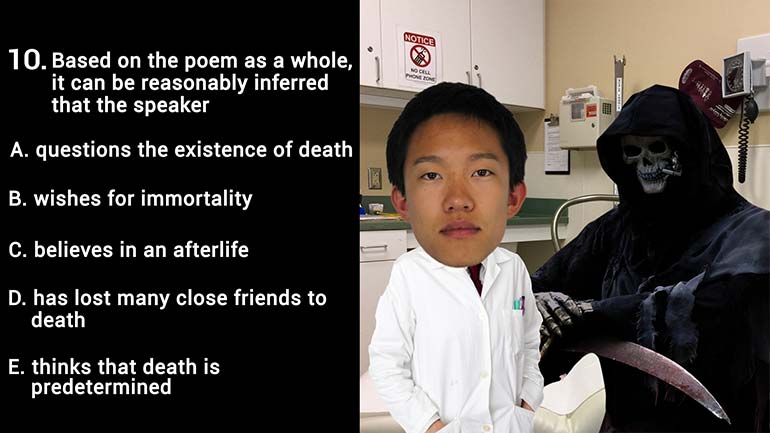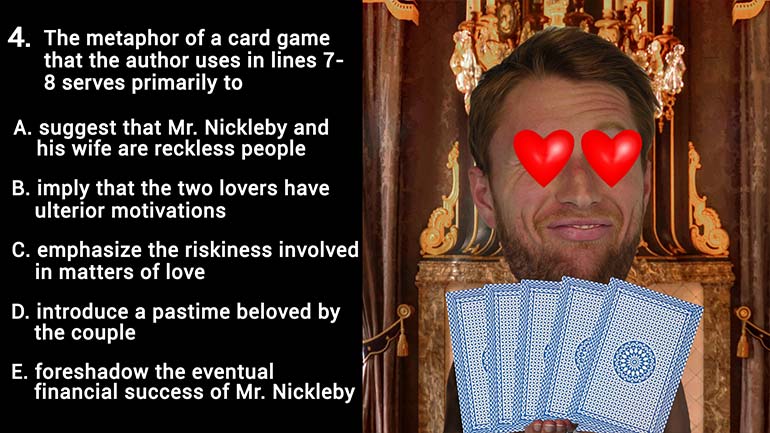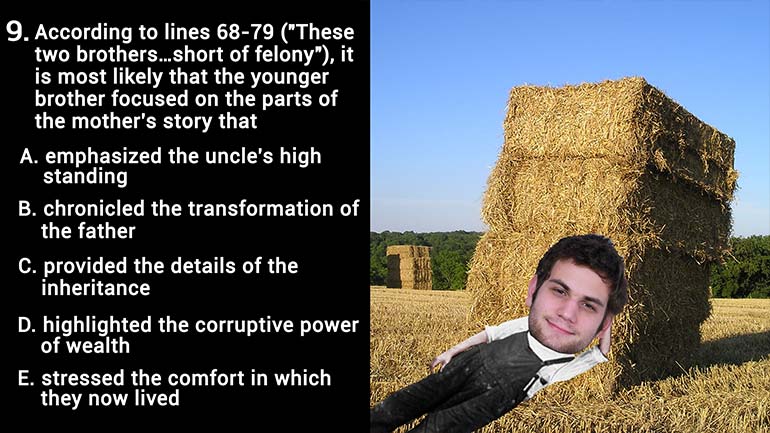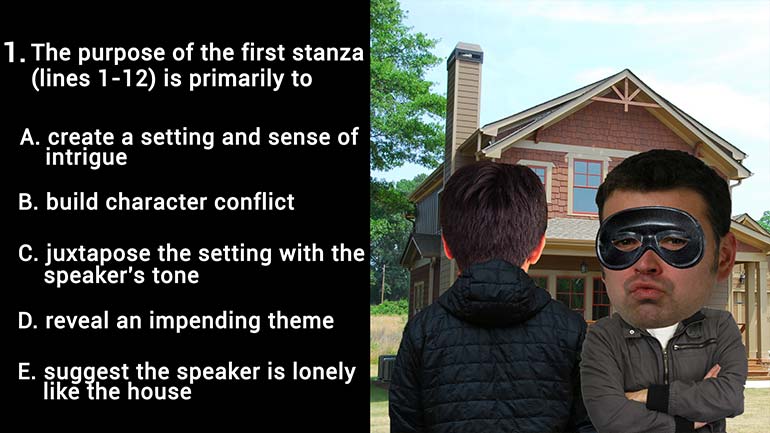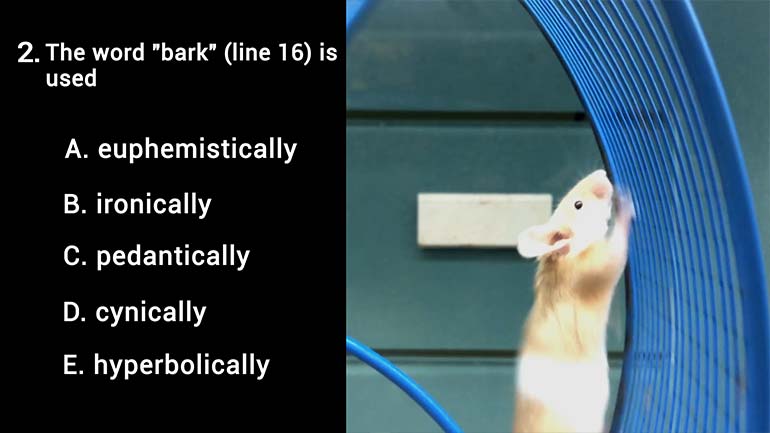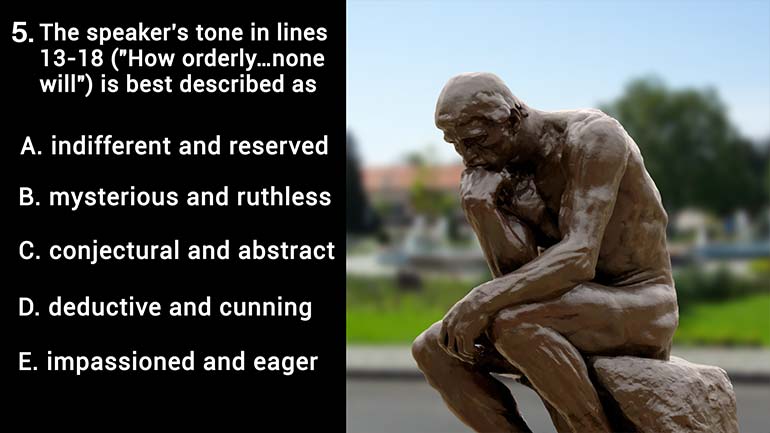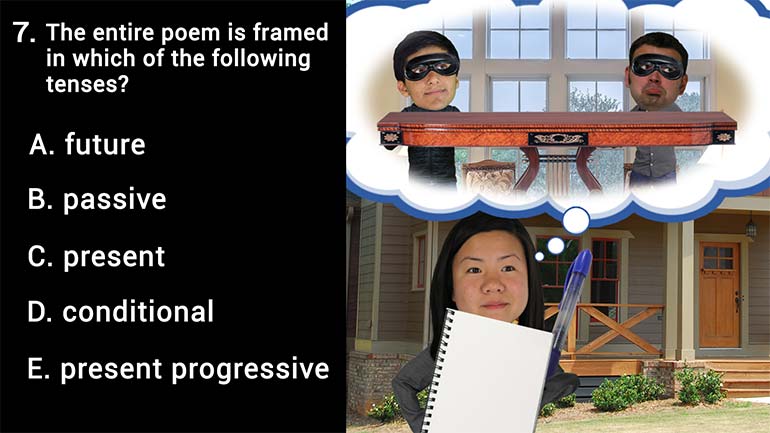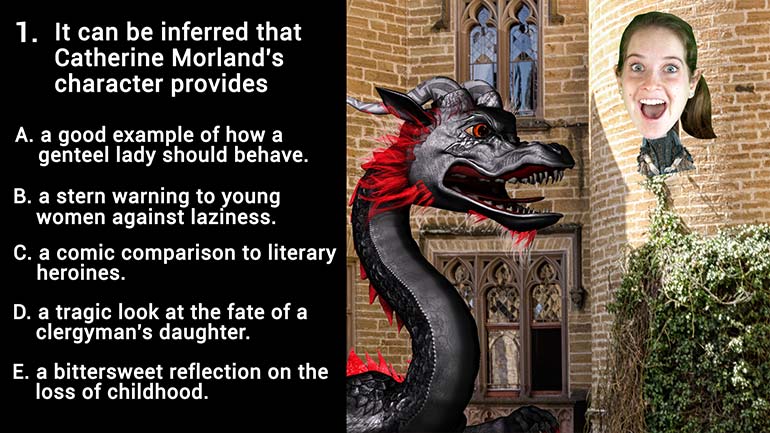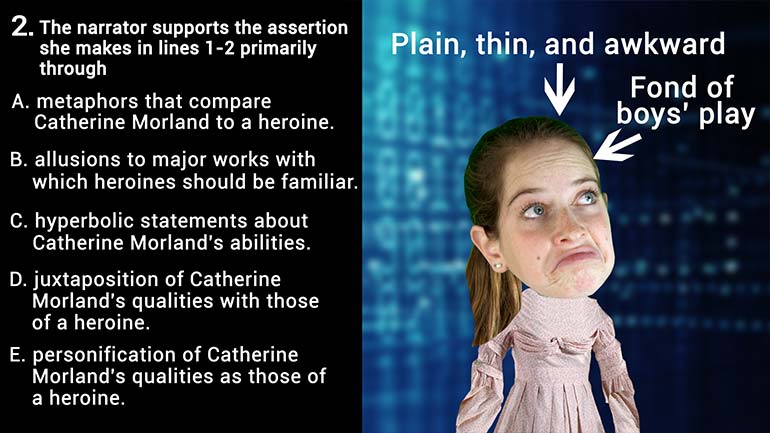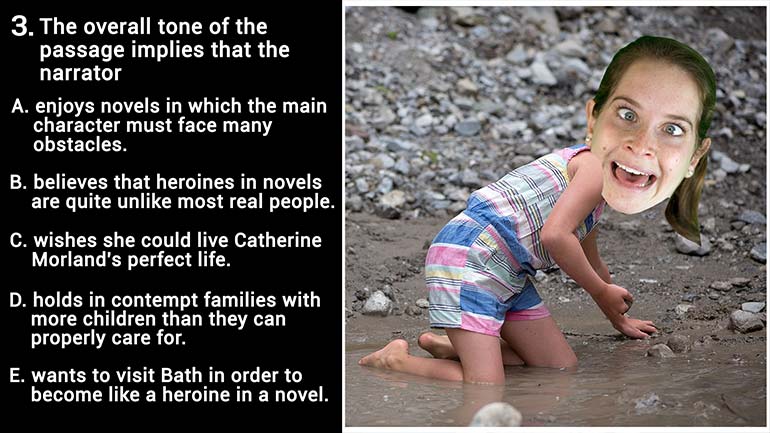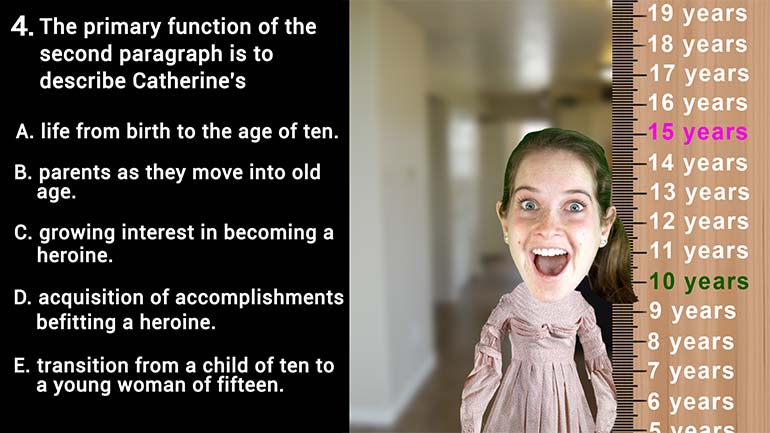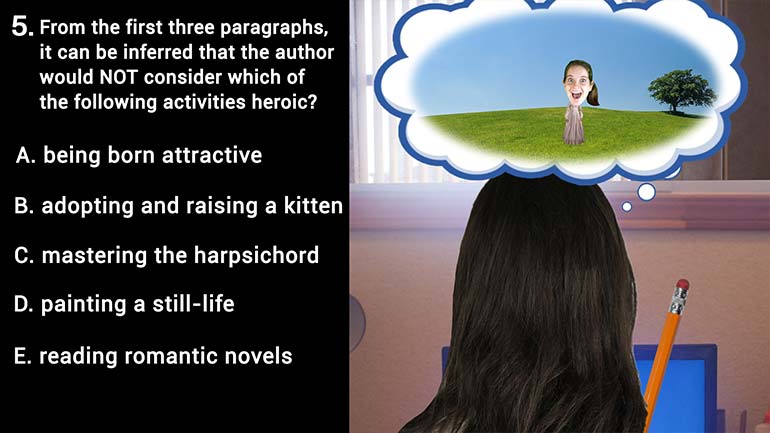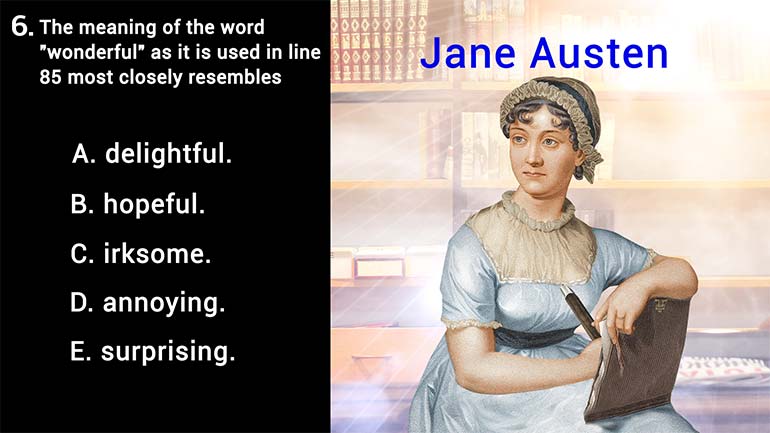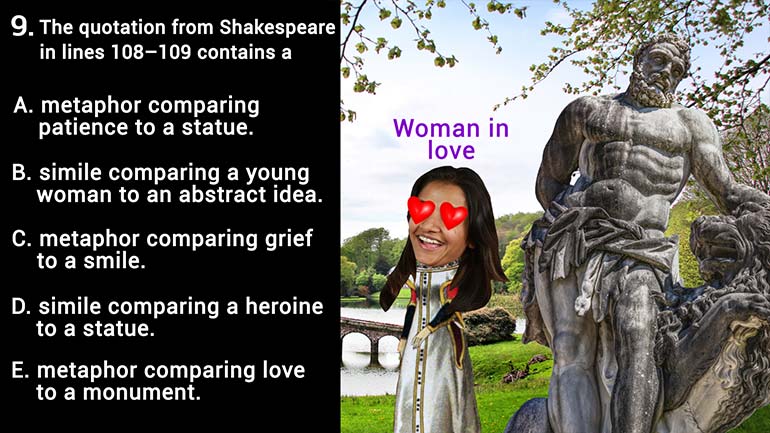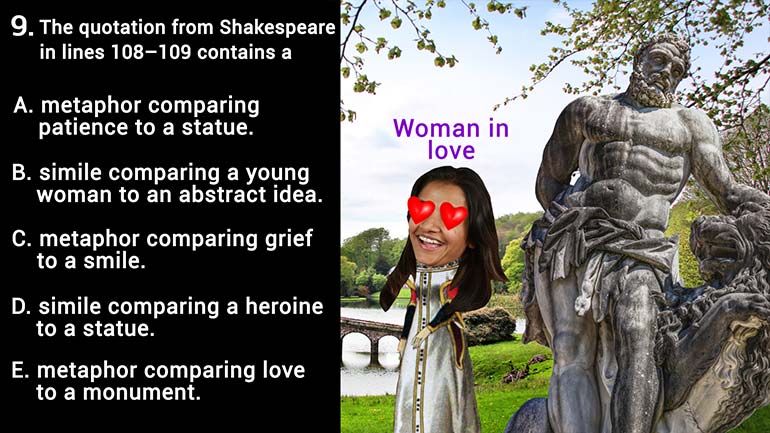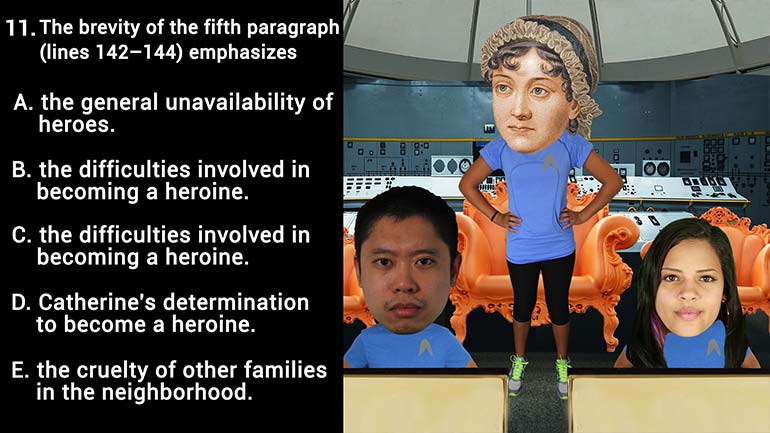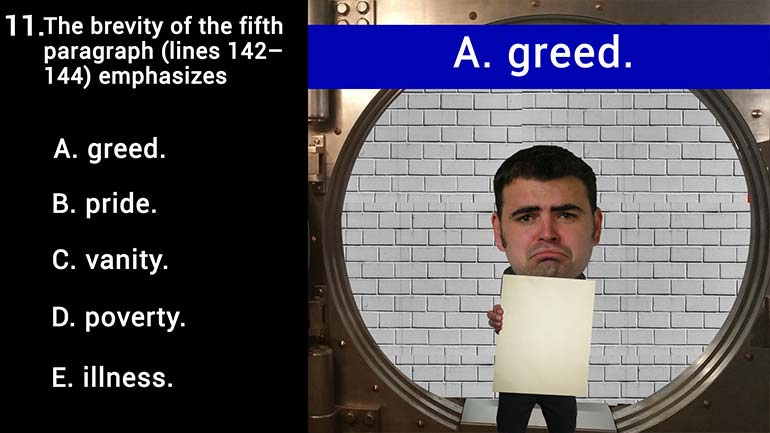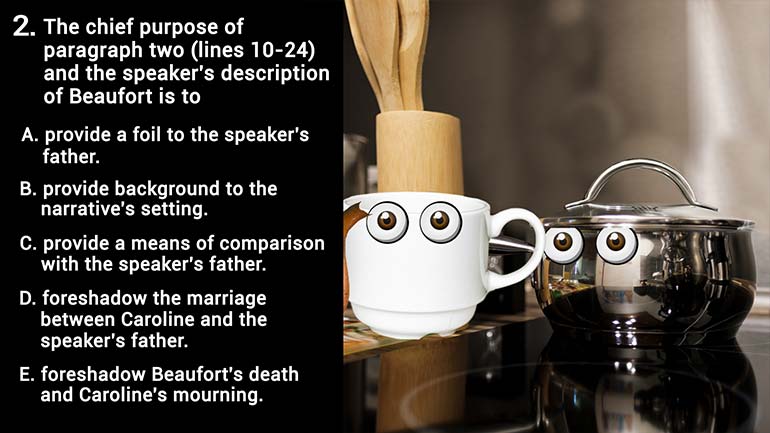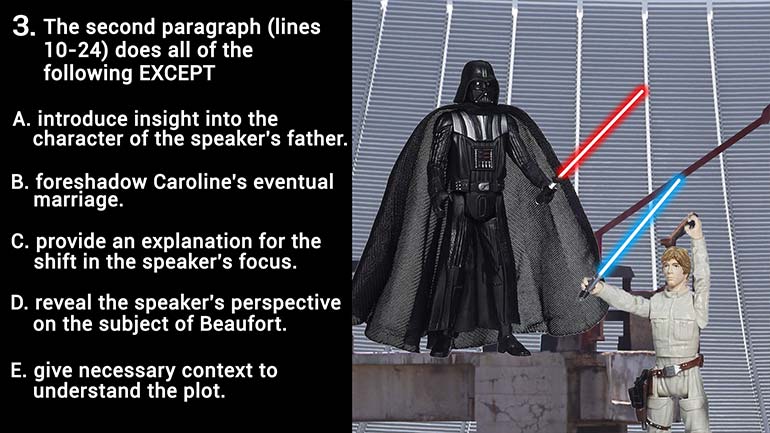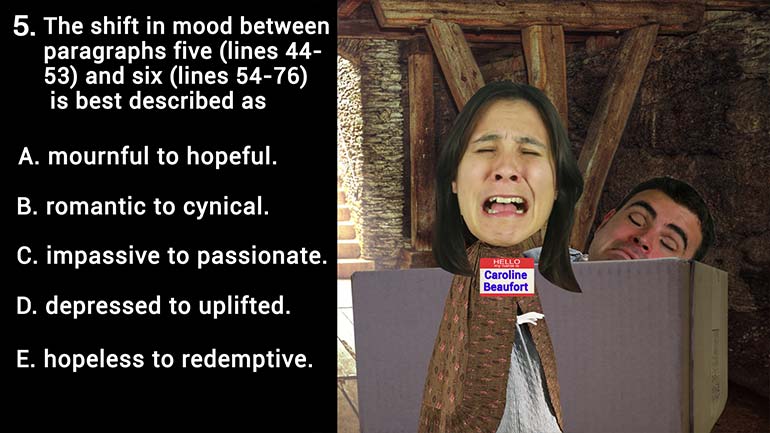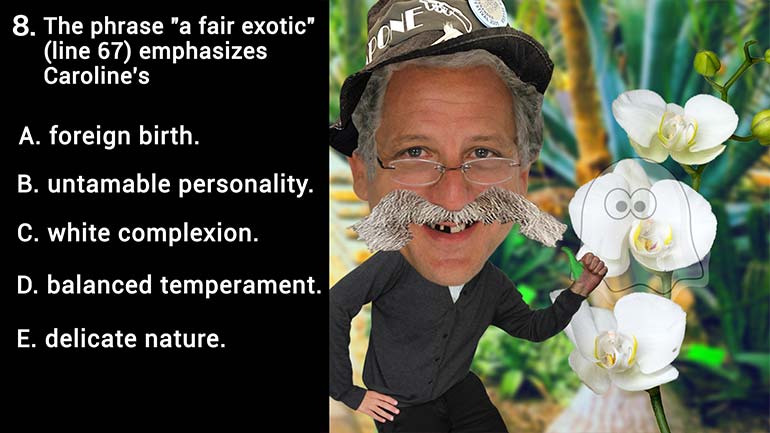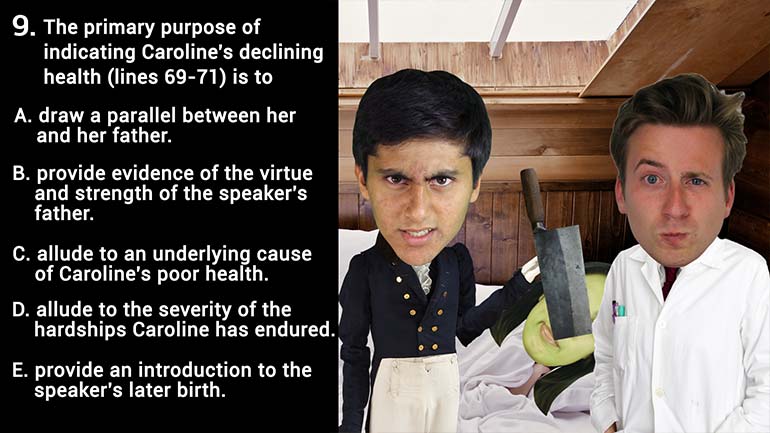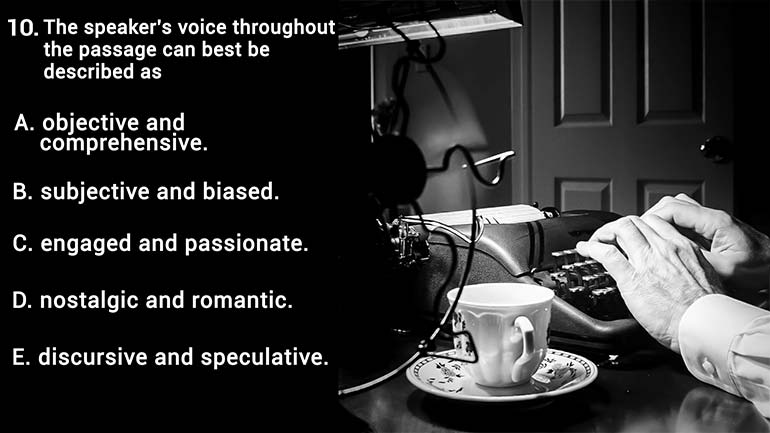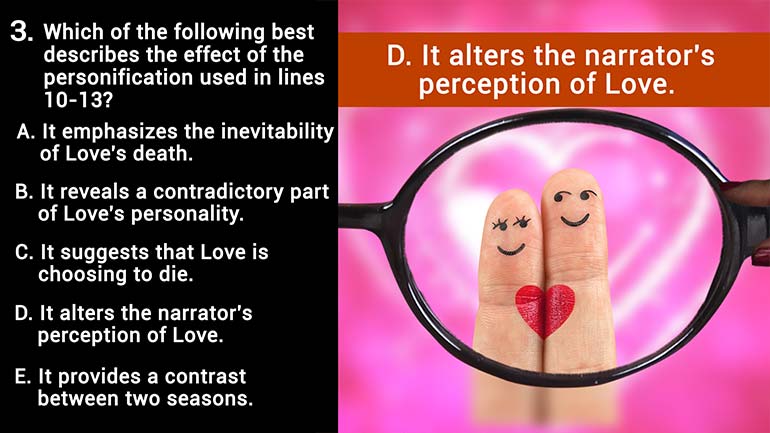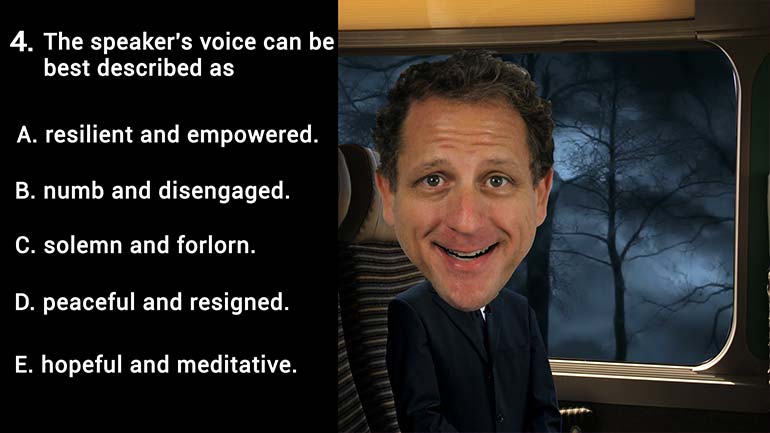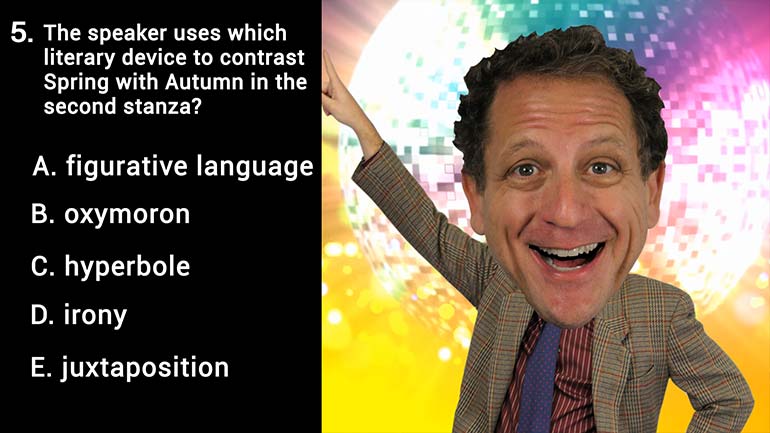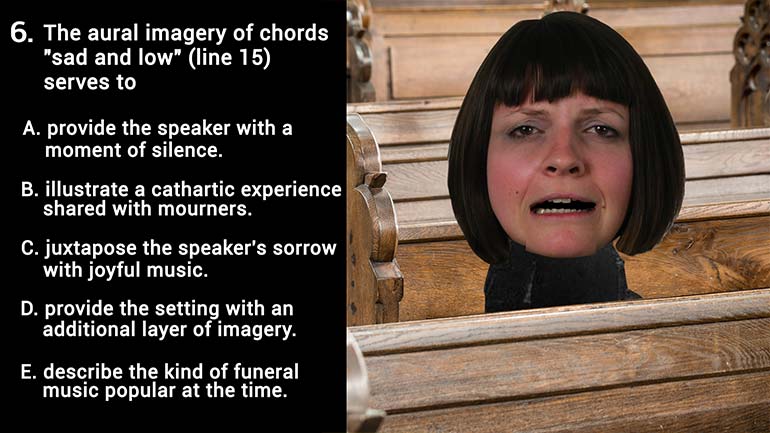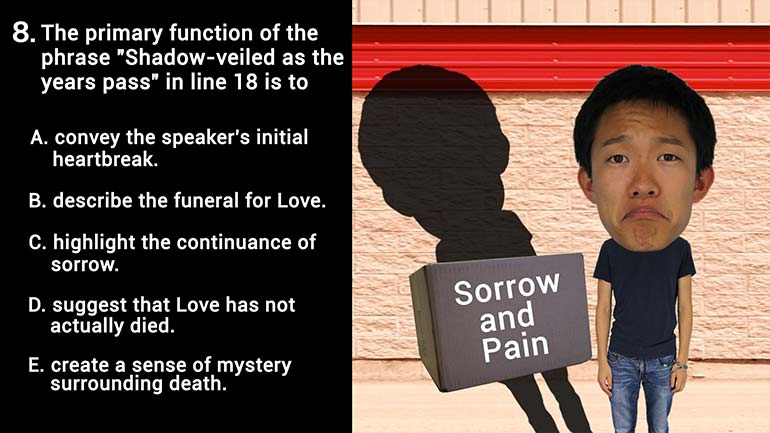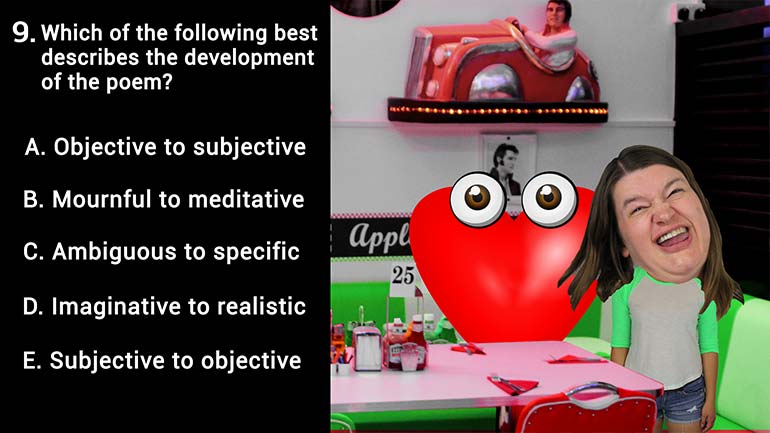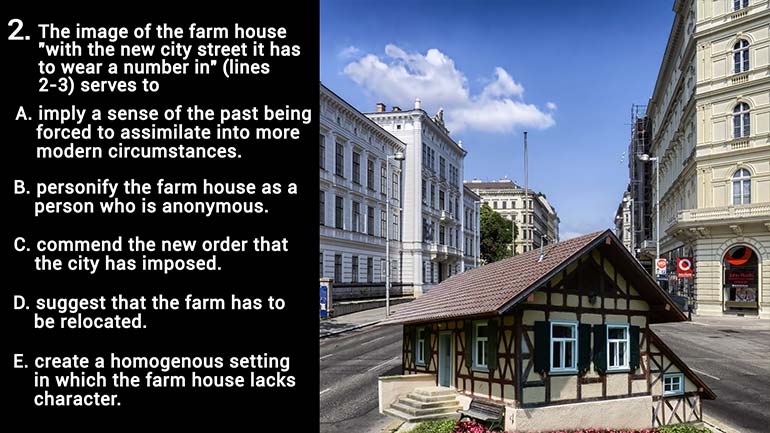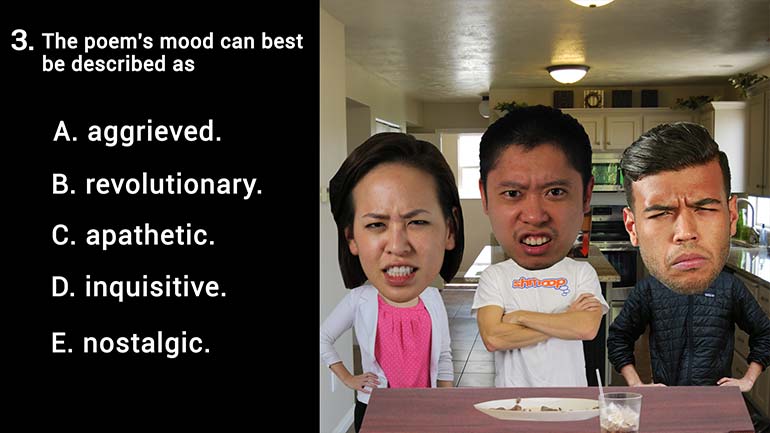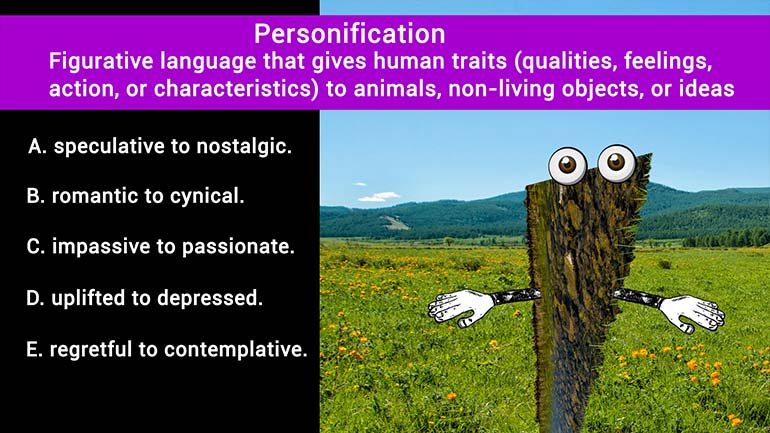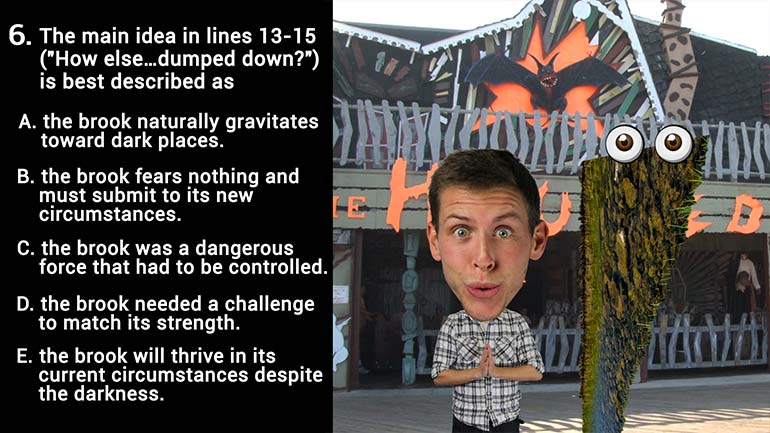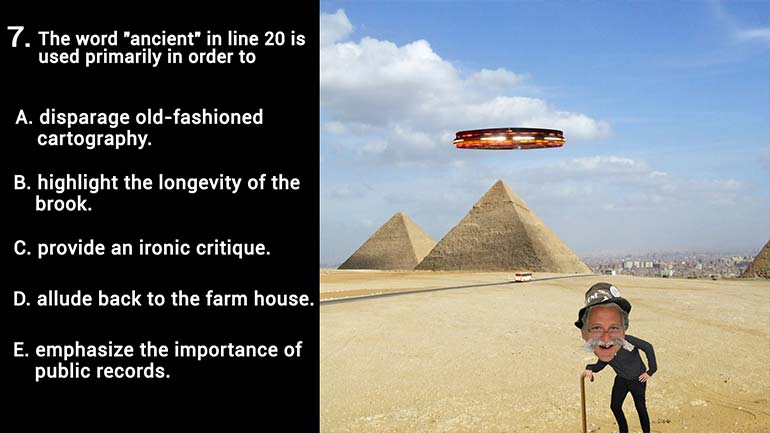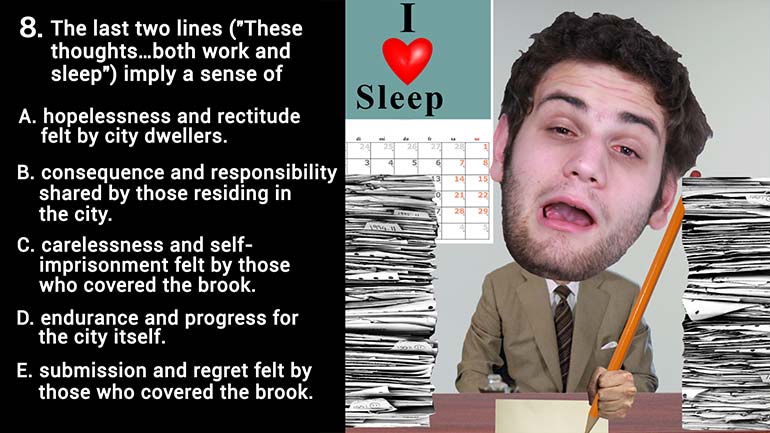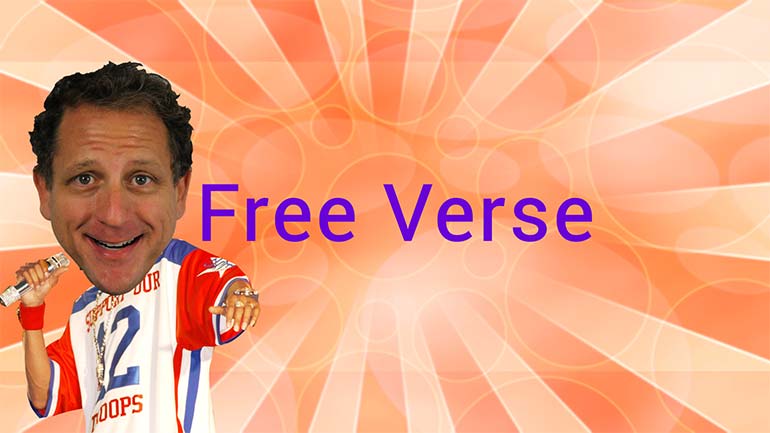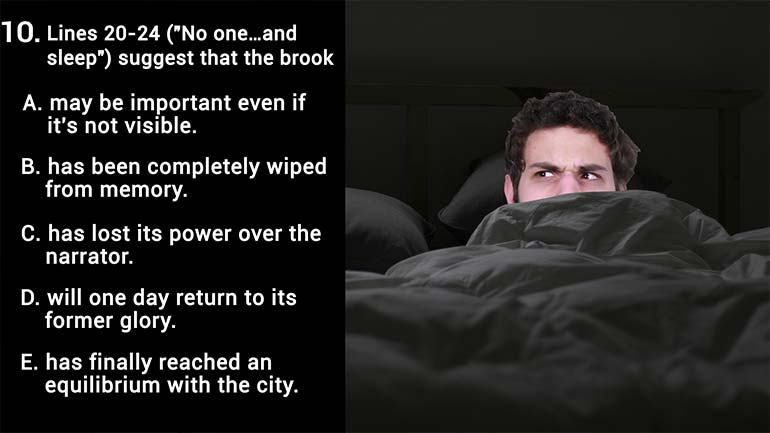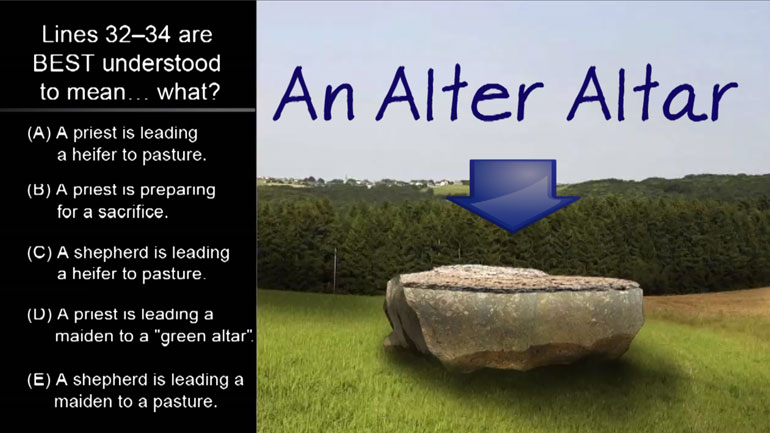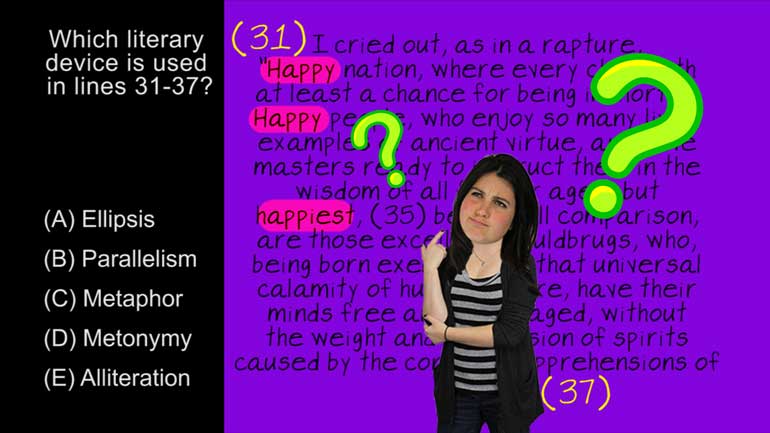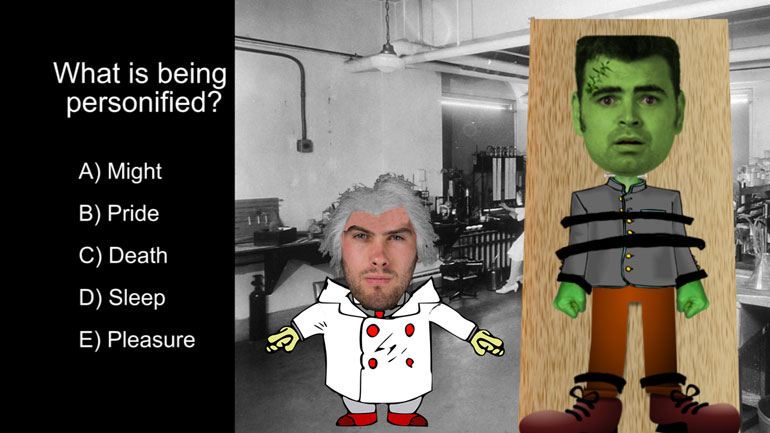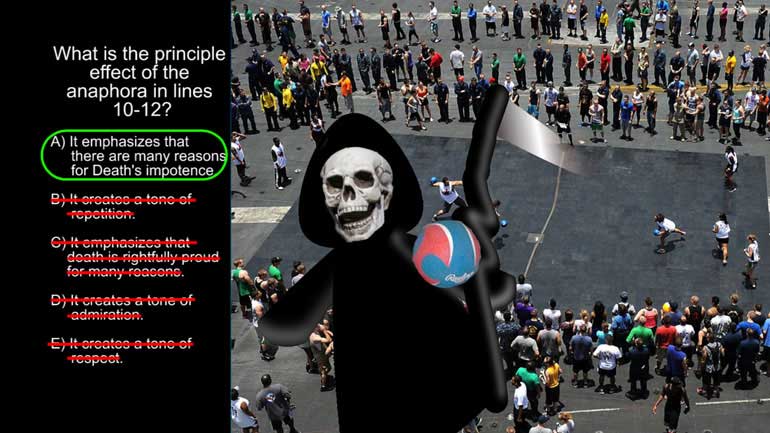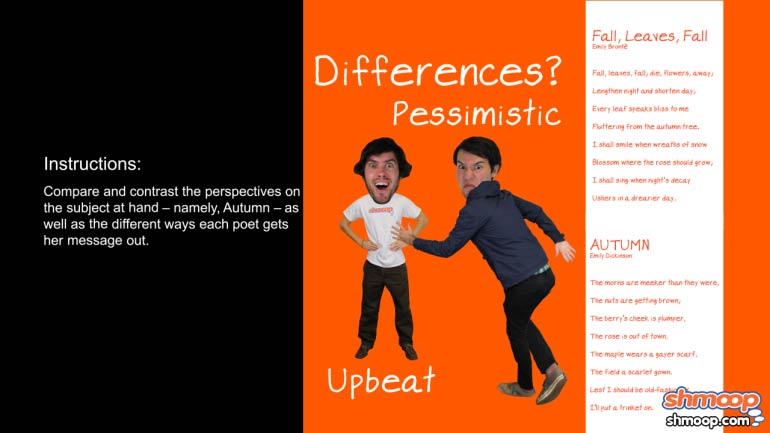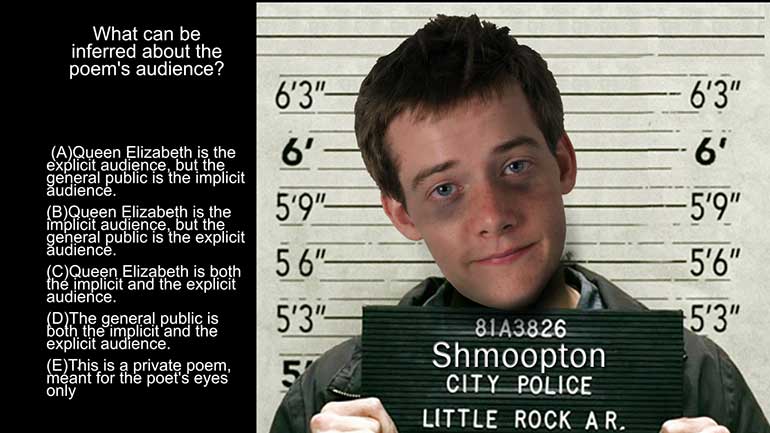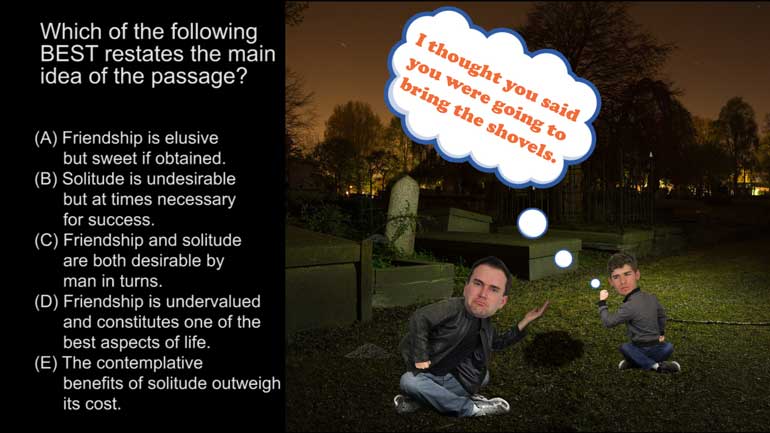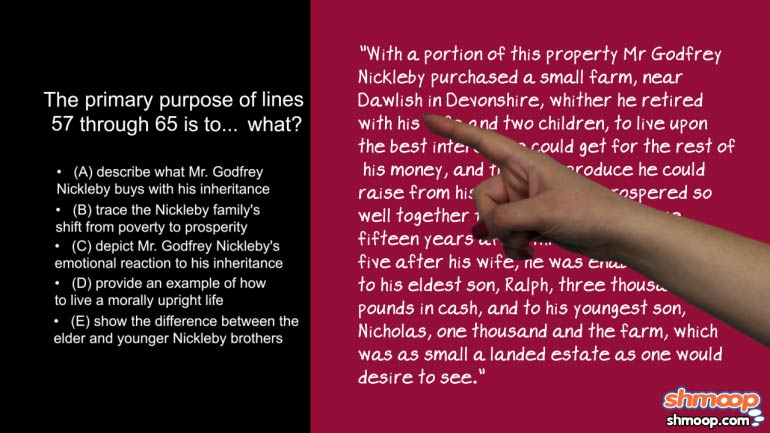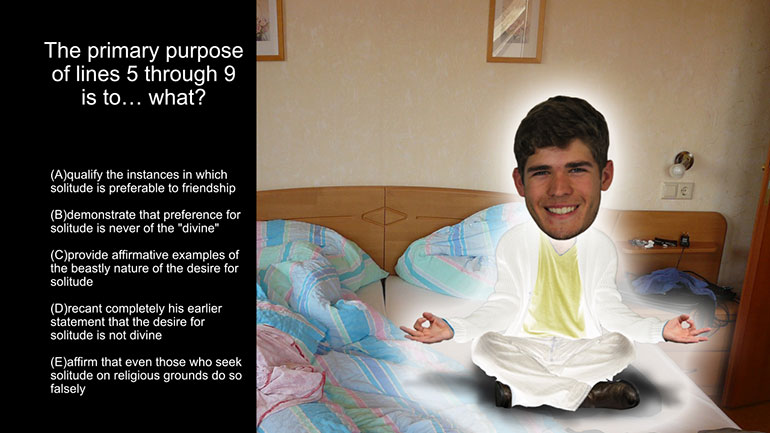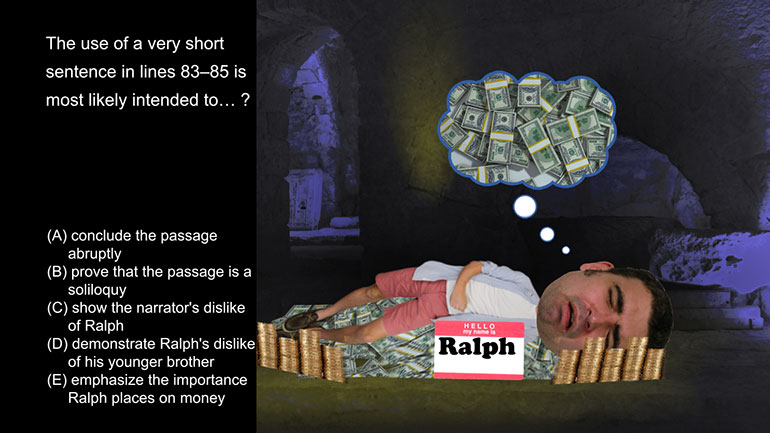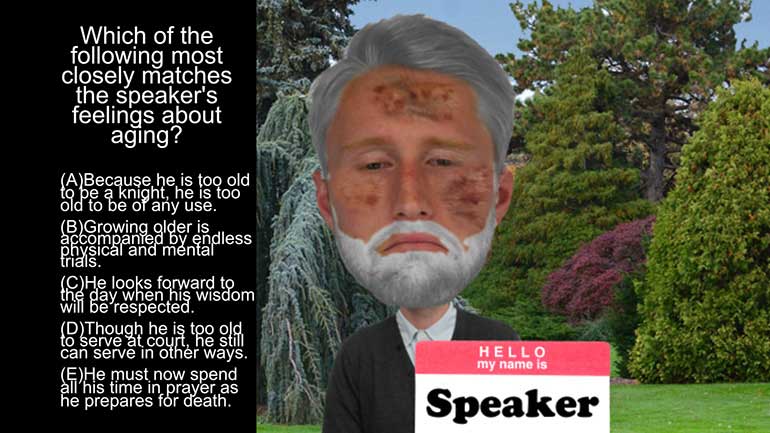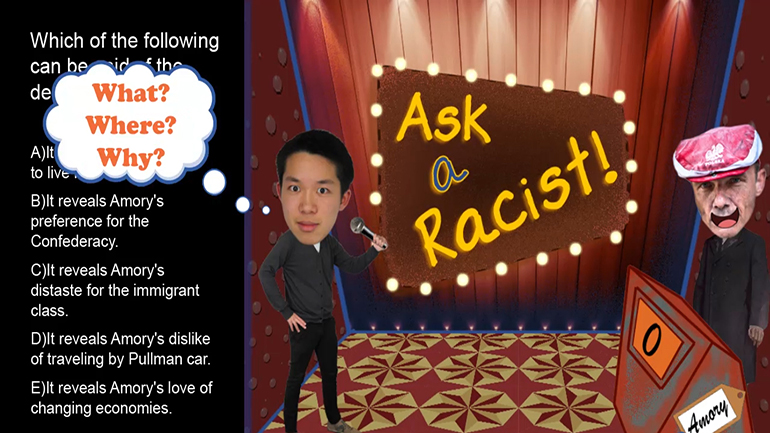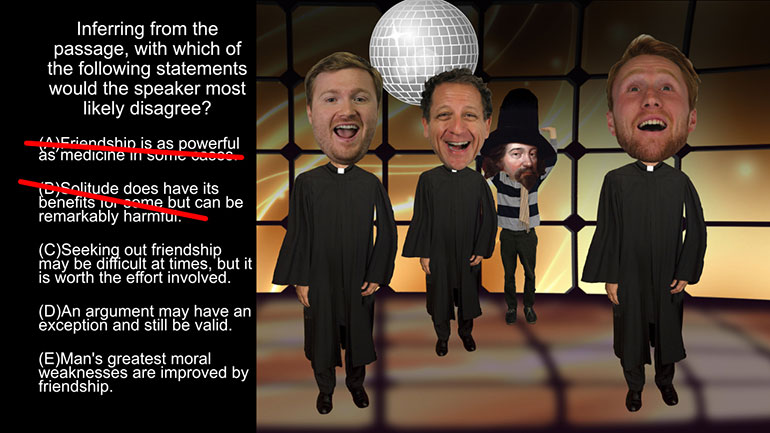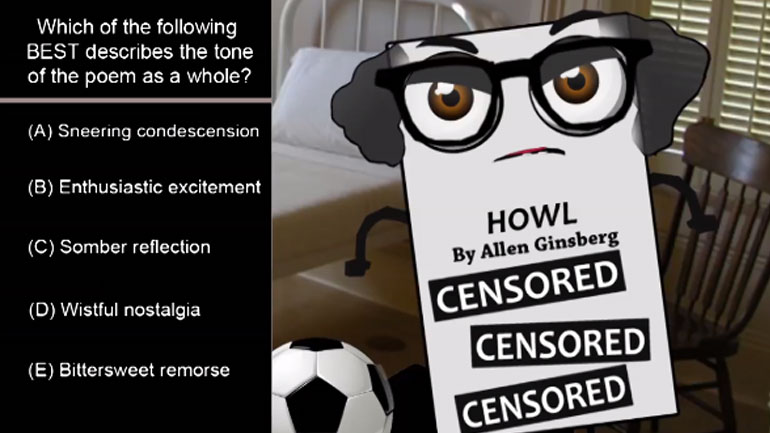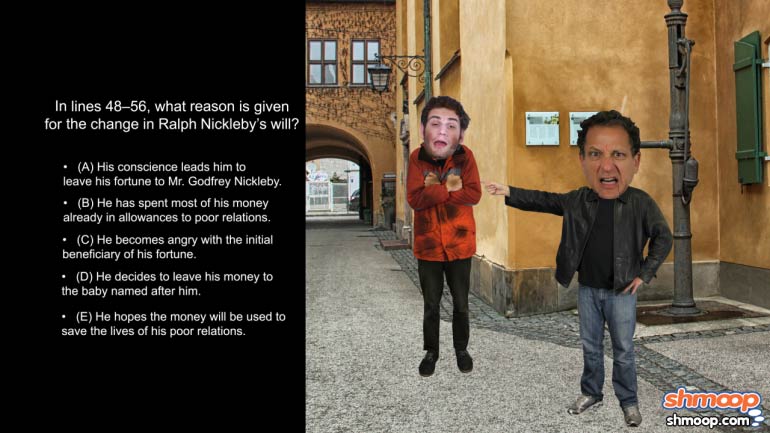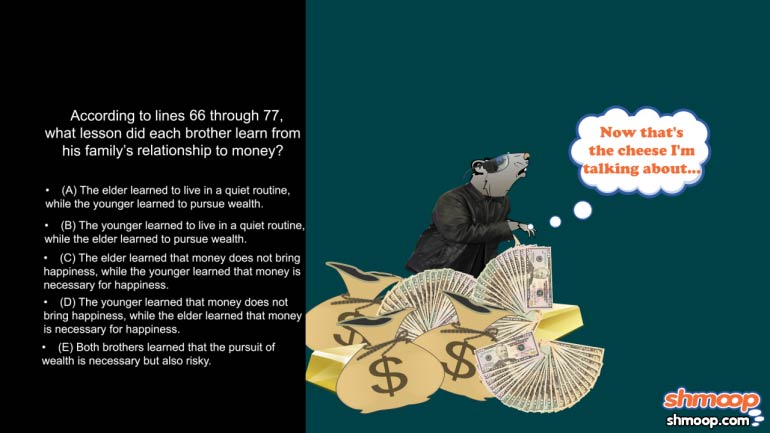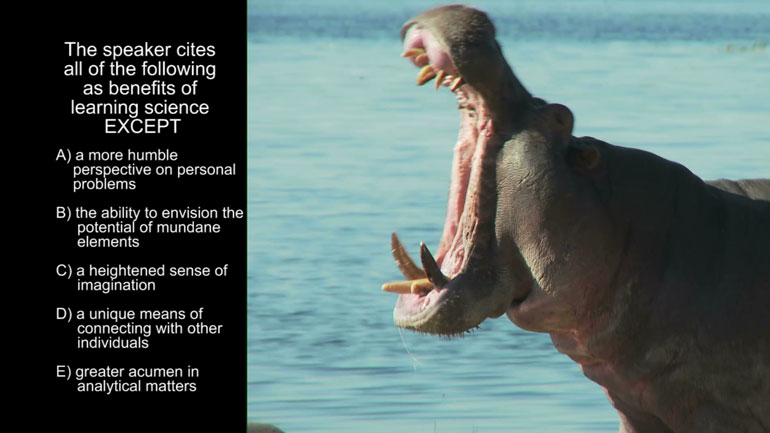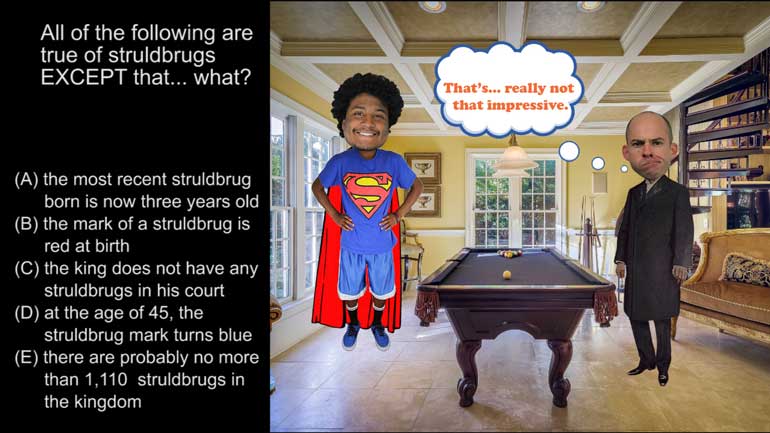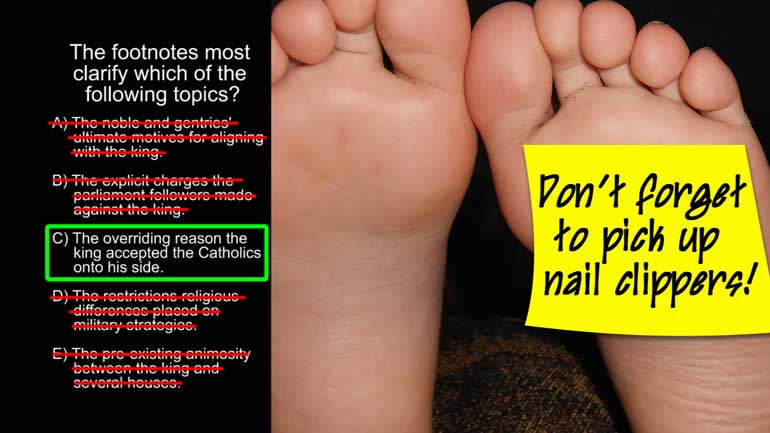ShmoopTube
Where Monty Python meets your 10th grade teacher.
Search Thousands of Shmoop Videos
AP English Literature Videos 112 videos
According to the information presented in the first and second paragraph (lines 1-26), it can be reasonably inferred that the kingdom of the Luggna...
In line 27, the adjective "inexpressible" is used
The main idea of the second paragraph (lines 24-33) can best be restated that
AP English Literature: More on the Speaker's Voice 8 Views
Share It!
Description:
The speaker's voice throughout the passage can best be described as
The speaker's voice throughout the passage can best be described as
Transcript
- 00:00
No Okay people Last question in this Caroline saga Here
- 00:07
we go Yeah The speaker's voice throughout the passage can
- 00:29
best be described as what choices Well if it weren't
- 00:37
for the speaker actually telling us that these folks are
- 00:39
his parents only probably would have never known it all
Full Transcript
- 00:43
Sounds very matter of fact almost journalistic e and comprehensive
- 00:46
Considering all the details we get regarding all the characters
- 00:49
involved the answer is a It's objective in comprehensive covers
- 00:53
everything and loser ball while the descriptions of the characters
- 00:56
and events aren't all emotional or biased And while the
- 00:59
speaker does seem engaged passionate is a stretch that's much
- 01:03
more of a journalistic thing The voice of the speaker
- 01:05
seems more obligatory Is the facts presented Make the tone
- 01:08
field concrete and substantial not rambling or speculative So get
- 01:12
rid of it and that's it We're done by CIA
- 01:17
Caroline Feel better
Related Videos
According to the information presented in the first and second paragraph (lines 1-26), it can be reasonably inferred that the kingdom of the Luggna...
In line 27, the adjective "inexpressible" is used
The main idea of the second paragraph (lines 24-33) can best be restated that
The list in lines 28-30, ("you make take sarza for the liver…castoreum for the brain") chiefly serves to
The phrase "it is that which tieth the knot" (line 45) is best understood as
